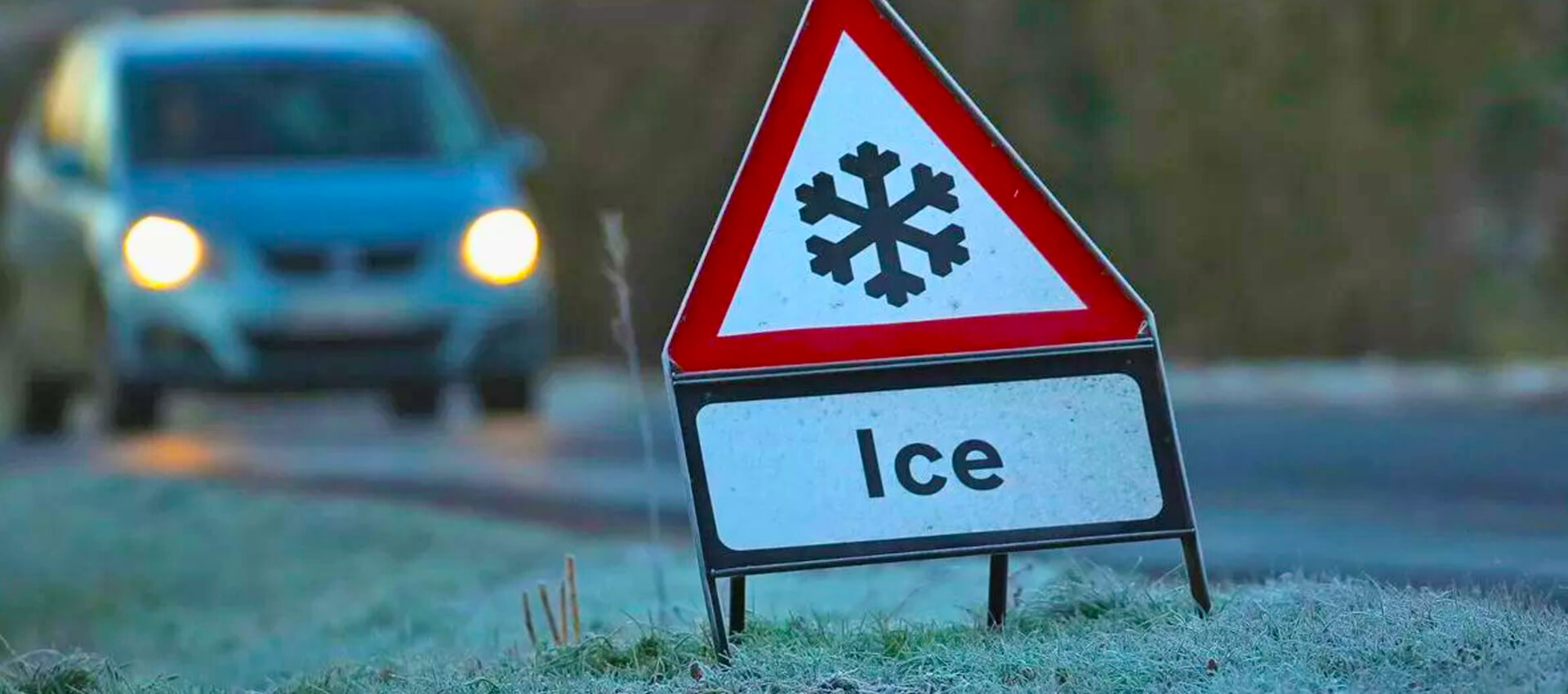What To Do When Driving On Ice

Driving on ice can be one of the most hazardous conditions for a driver, especially when learning to drive.
Follow the advice below to make sure you’re prepared for whatever the weather can throw at you, and make sure you stay safe on our roads during the winter months.
Windows – Clear all ice from your windows and lights BEFORE you begin your journey.
Stopping distances – These can be up to TEN TIMES more when driving on ice, so ensure that you reduce your speed and keep a safe distance from the vehicle in front.
Slowly does it – Ensure that all your movements are gentle and progressive. Reduce your speed and ensure that you use your accelerator, brakes and steering with smooth movements to reduce the risk of skidding.
Moving off – When moving off, select second gear and ease your foot off the clutch gently to avoid wheel-spinning.
Downhill – When driving downhill reduce your speed BEFORE you reach the hill. Try to avoid using the brakes and select a low gear.
Cornering – When cornering on the ice do not brake as it can cause your car to spin.
Black ice – Be extra cautious of black ice. This is most commonly found in areas that are shadowed from the sun. If your steering suddenly feels light, ease off the accelerator and avoid any harsh movements. Remember, you might be all cosy and warm inside your car, but NEVER forget that it could be below freezing outside.
What is black ice?
Black ice is a thin, clear layer of ice which is often mistaken for a wet road surface. Black ice is present when rainwater falls in freezing conditions and either freezes whilst falling, or it freezes upon contact with the road to form a sheet of clear ice with few imperfections.
Why is black ice such a worry for drivers?
While all ice is very dangerous to drive in, black ice is especially dangerous. This is because it’s extremely difficult to see. Drivers often find themselves on a very slippery patch of the road completely unprepared.

When to expect black ice
You need to be prepared and expect black ice at any time when the temperature is around freezing point (0°C or 32°F). Black ice is most common during early morning or late evening; as it hasn’t had a chance to be melted by the sun.
Give yourself plenty of time to get to your destination and before you start your journey look at the pavement and the road around you and see how slippery it is.
While this isn’t a definitive judgement of your whole journey it may help.
Be extra cautious and avoid if possible journeys which include roads which are protected from the sun such as shaded by trees or bridges. If the sun hasn’t hit these spots the chances are the ice will remain unmelted here.
What to do when driving on black ice
Unfortunately, there isn’t much you can do if you hit a patch of black ice besides remain calm, cautious and let your vehicle pass over.
The ice surface is so smooth your tyres will have little to no traction; with a braking distance of around 9 times further than in normal conditions*.
Keep both hands on the wheel, take your foot off the accelerator and don’t slam on your breaks. The best cause of action is to avoid driving in freezing conditions where possible and always drive at a sensible speed.
Unless your journey is critical, don’t drive.


